Songjiang, Shanghai, China – Thursday, June 2nd, 2011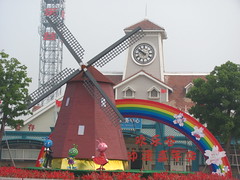
I forget how, back in 2011, Happy Valley Shanghai was the big prize for coaster enthusiasts visiting China. Besides being the only major theme park located within China’s largest city (which automatically lent the park a certain cachet), it had at least three, maybe four major coasters from three of the most popular western manufacturers: Intamin, B&M, & The Gravity Group.
Even today, that’s still a very good collection by nearly any standard, but there’s enough competition that Happy Valley Shanghai doesn’t feel quite like the must-visit it was when it opened over a decade ago. Part of that is due to other emergent issues unrelated strictly to the collections choice of coasters. With time, the luster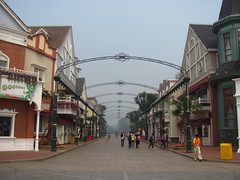 wears off. Sometimes that effect happens over the course of a decade, with more competition and thus relative perspective on things; but it can also happen over the course of a few hours, when the limits of just having a decent collection of rides is laid bare.
wears off. Sometimes that effect happens over the course of a decade, with more competition and thus relative perspective on things; but it can also happen over the course of a few hours, when the limits of just having a decent collection of rides is laid bare.
Happy Valley Shanghai, when compared to the other Happy Valley parks I’ve been to, seems to have the issue that those playing a theme park management sim game may have encountered before: it’s a wide open sandbox level with more generous financial resources, and so it comes off feeling flat, empty, and bereft of creative inspiration compared to those that had to work within more limiting restrictions. The themed environment feel stretched thin and lack the level of landscaping or attention of detail that have allowed the other Happy Valley parks I’ve been to have their surprising moments of charm.
have allowed the other Happy Valley parks I’ve been to have their surprising moments of charm.
Being in Shanghai, the crowds can also more easily become overwhelming due to the massive local population, which isn’t helped by the awful operations that typify the Happy Valley chain. By international standards the park actually didn’t have that many people, but the park manages the crowds that do show up so poorly it feels more crowded than it really is. I can’t imagine that’s good for their business model, but they’re still adding more parks so I guess they’ve found a way to make things work with the park operating at a permanent one-third of its theoretical capacity.
Things especially didn’t get off to a great start at my first ride on the signature Fireball coaster. I got there a few minutes before opening, but the ride already had a long queue formed that ultimately took over an hour with one train operation and the typically abysmal loading procedures. Still, if there was only one coaster I could ride today, it was going to be the custom Gravity Group wooden coaster. I wasn’t going to risk waiting for later.
Making matters way more aggravating was the most shameless act of queue jumping I’ve ever experienced in all my travels. A group of six or so guys (led by the dude in the fedora pictured below) basically just wormed their way to the front of the line so they could get on sooner. It wasn’t even the “excuse me I have to meet the rest of my group” that’s common everywhere, but just slowly weaving through any open gaps that people happened to leave in the queue. Occasionally there would be a blockage, at which point they’d stop and chat for a while until things shifted and they could find a way to slip further ahead. I tried holding both rails when they got to me, but being a single rider it was impractical to keep that up for long and pretty soon they had managed to get by. Being in a foreign country and not speaking the local language was all that stopped me from confronting them, and my attempts to make “can you believe this?” eye contact with others was met with complete blankness. It wasn’t even the nerve of this particular group, but that literally nobody else cared.
When I finally got to the ride, I was assigned to sit in a middle wheel seat, one of the worst seats in the house.
 Even being on a relatively major Gravity Group wooden didn’t help stave of the numbing frustration by the time the ride was complete. It was a good ride but I got nothing out of it. I’d be back later to try for better luck.
Even being on a relatively major Gravity Group wooden didn’t help stave of the numbing frustration by the time the ride was complete. It was a good ride but I got nothing out of it. I’d be back later to try for better luck.
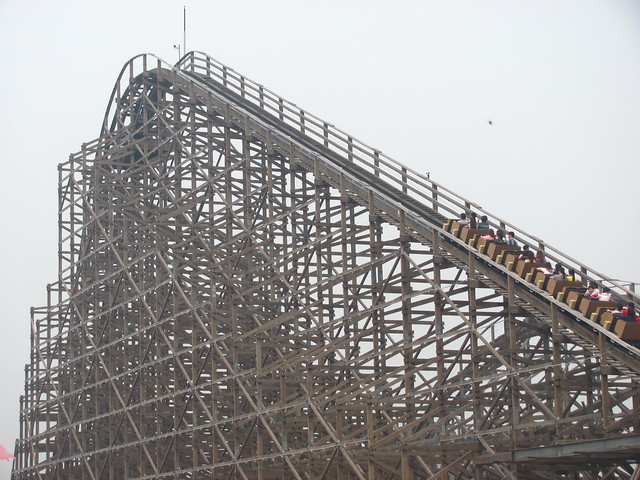 Most of the Happy Valley parks have a “Happy Times” circus-themed area. Apart from Fireball, this one lacked much of the energy of its counterparts.
Most of the Happy Valley parks have a “Happy Times” circus-themed area. Apart from Fireball, this one lacked much of the energy of its counterparts.

 It did, however, have a number of these rather unusual and questionably racist sculptures.
It did, however, have a number of these rather unusual and questionably racist sculptures.




 Moving on, the park has an old Shanghai themed section called “Shanghai Beach” as a nod to local history. Again, rather cold and sterile. I can’t vouch for how much local visitors enjoy this interpretation of their hometown, but judging by the lack of crowds I don’t think it quite hit the mark.
Moving on, the park has an old Shanghai themed section called “Shanghai Beach” as a nod to local history. Again, rather cold and sterile. I can’t vouch for how much local visitors enjoy this interpretation of their hometown, but judging by the lack of crowds I don’t think it quite hit the mark.



 The big attraction here, and indeed the largest attraction in the whole park, is their B&M Dive Coaster called Diving Coaster.
The big attraction here, and indeed the largest attraction in the whole park, is their B&M Dive Coaster called Diving Coaster.
The ride has no apparent thematic connection to Shanghai Beach.
Diving Coaster is an exact clone of SheiKra at Busch Gardens Tampa, even down to the color scheme. However, Diving Coaster features wider 10-across seats.
213 feet tall. Two near-vertical drops. One Immelmann inversion. One tunnel. One splashdown. And, of course, one train in operation.
This was now my third and final B&M Dive Coaster to experience in Asia. It was also, frankly, the least memorable, being a familiar experience set in a largely empty grass lot and concrete pad. At least I was in a somewhat better mood getting off the ride than I had been on Fireball.
Of course, souring that mood somewhat was trying to exit the coaster. Someone left their backpacks in the loose article cubbies, and apparently the park’s policy is to lock the exit and trap all thirty people on the small unloading platform until every item is claimed. This went on for several minutes of confusion, where it seemed increasingly clear that the backpacks belonged no one from this ride cycle. I forget how it was ultimately resolved, although I wouldn’t be surprised if someone finally decided to help themselves to some free grab bags if it meant releasing us all from forced captivity.

 Another recurring Happy Valley theme parks theme is a Tibetan/western China themed zone called “Shangri-la Woods.” As in the other cases, this was the best themed environment in the park, although it could stand to have some more foliage to live up to the name.
Another recurring Happy Valley theme parks theme is a Tibetan/western China themed zone called “Shangri-la Woods.” As in the other cases, this was the best themed environment in the park, although it could stand to have some more foliage to live up to the name.
The big attraction in this zone is the Intamin mega-lite, called Mega-Lite.
I believe it may have a more descriptive name in Chinese, although Happy Valley Shanghai is slightly different from the other parks in the chain in that the English names almost all just copy the manufacturer titles.
 Unfortunately when I first arrived, the ride was closed for its “weekly inspection.” The coaster would be open today for a total of 3.5 hours. Given the typical operating capacity, that means the park management has planned for fewer than 1000 people to ride in the entire day.
Unfortunately when I first arrived, the ride was closed for its “weekly inspection.” The coaster would be open today for a total of 3.5 hours. Given the typical operating capacity, that means the park management has planned for fewer than 1000 people to ride in the entire day.
 Fortunately, because we’re all in the future now, I can skip ahead to when it reopened. By the time I got back to this park of the park just before 1:30 there was already a somewhat sizable line formed.
Fortunately, because we’re all in the future now, I can skip ahead to when it reopened. By the time I got back to this park of the park just before 1:30 there was already a somewhat sizable line formed.
 The queue only took about a half hour, and even got shorter as the first wave of people who showed up were slowly moved through. I ended up riding Mega-Lite twice.
The queue only took about a half hour, and even got shorter as the first wave of people who showed up were slowly moved through. I ended up riding Mega-Lite twice.
 It wasn’t my highest priority, since I had previously ridden the other Happy Valley mega-lite a bunch of times a few months ago, and I was looking forward to another mega-lite in just a couple of weeks. For a more detailed breakdown of this coaster’s qualities, I’d recommend the Fly Over Mediterranean review from Happy Valley Chengdu, which all equally applies here. One slight difference, Shanghai does have the slightly better landscaping of the mega-lites I’ve been on.
It wasn’t my highest priority, since I had previously ridden the other Happy Valley mega-lite a bunch of times a few months ago, and I was looking forward to another mega-lite in just a couple of weeks. For a more detailed breakdown of this coaster’s qualities, I’d recommend the Fly Over Mediterranean review from Happy Valley Chengdu, which all equally applies here. One slight difference, Shanghai does have the slightly better landscaping of the mega-lites I’ve been on.
So, here are a few photos of this relatively small and short but still very good coaster.











 Looking back towards Fireball near the front of the park, which I’ll return to soon. Happy Valley Shanghai is somewhat unique for having several large bodies of water and undeveloped areas of greenery, which makes it a much more walking-intensive park than the other Happy Valleys.
Looking back towards Fireball near the front of the park, which I’ll return to soon. Happy Valley Shanghai is somewhat unique for having several large bodies of water and undeveloped areas of greenery, which makes it a much more walking-intensive park than the other Happy Valleys.
You may need to step out of the way for these trams that help shuttle guests along the lengthy open corridors.
I think this family zone may have been the park’s “Sunshine Beach“? After the relative richness of design found in Shangri-la Woods, this area seemed particularly unfinished. I believe this area has since undergone the park’s largest development project since it opened, with some of the rides getting new names and the addition of the world’s first B&M family inverted coaster.


 Even before adding the family B&M coaster (a concept that both feels surprising and overdue for the prolific Swiss manufacturers), this area was noteworthy for being the only area in the park that had two coasters. I was somewhat surprised to find that their Spinning Coaster was a real-deal Zamperla Twister Coaster, and not one of the countless Golden Horse spinning variants that blanket China, including most of the other Happy Valley parks. Not that I needed to ride it any more than once.
Even before adding the family B&M coaster (a concept that both feels surprising and overdue for the prolific Swiss manufacturers), this area was noteworthy for being the only area in the park that had two coasters. I was somewhat surprised to find that their Spinning Coaster was a real-deal Zamperla Twister Coaster, and not one of the countless Golden Horse spinning variants that blanket China, including most of the other Happy Valley parks. Not that I needed to ride it any more than once.



 The other was the park’s family coaster, and also interestingly the only coaster at this Happy Valley supplied by a Chinese manufacturer: LeLe’s Chariot. It’s not entirely clear who LeLe is, although it’s since been renamed to the equally ambiguous “Coastal Ant.”
The other was the park’s family coaster, and also interestingly the only coaster at this Happy Valley supplied by a Chinese manufacturer: LeLe’s Chariot. It’s not entirely clear who LeLe is, although it’s since been renamed to the equally ambiguous “Coastal Ant.”
Big helices and shallow ramp hills are the name of the game for this Golden Horse Space Car model coaster.


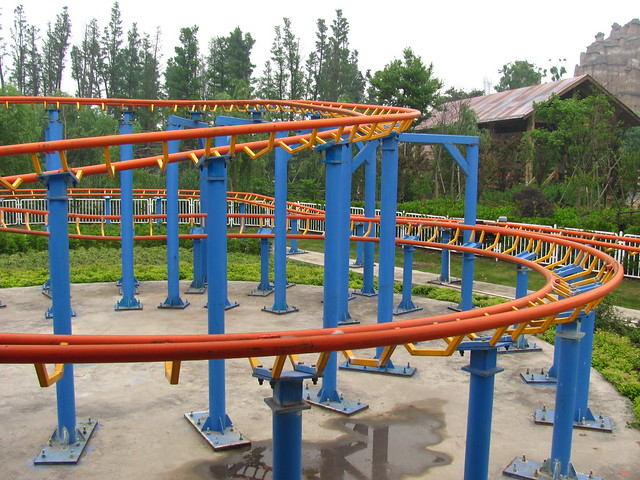 The ants are an ever-present feature of every Happy Valley theme park. While usually they get a full theme zone, at Shanghai their debut footprint was limited to the “Ant Castle” inside this grey building that looks like a disused expo hall.
The ants are an ever-present feature of every Happy Valley theme park. While usually they get a full theme zone, at Shanghai their debut footprint was limited to the “Ant Castle” inside this grey building that looks like a disused expo hall.

 Get inside, kiddos! Maybe there’s free candy!
Get inside, kiddos! Maybe there’s free candy!
 Inside was one of the most darkly depressing kid’s “fun” zones I’ve ever seen. I’m half expecting to find a serial killer on the loose in here. I can only hope they’ve spent some significant effort fixing this area up.
Inside was one of the most darkly depressing kid’s “fun” zones I’ve ever seen. I’m half expecting to find a serial killer on the loose in here. I can only hope they’ve spent some significant effort fixing this area up.
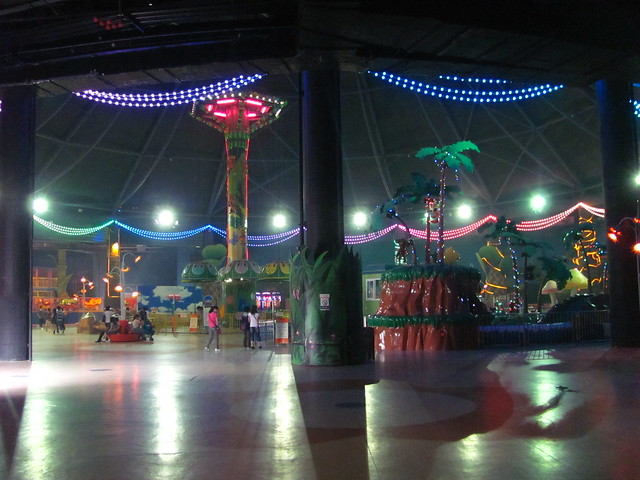
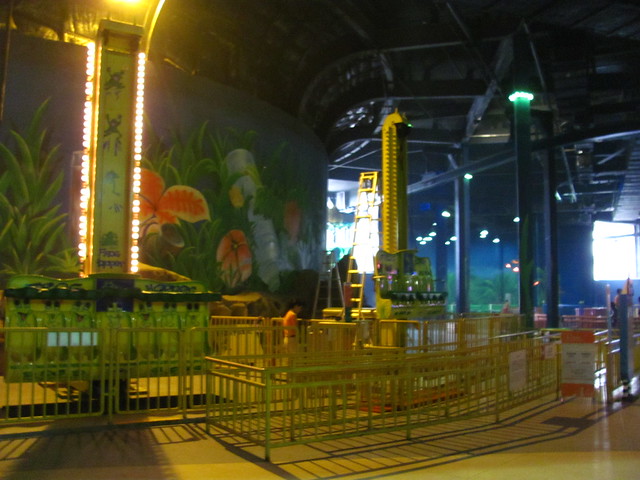

 Yet surprisingly, one of the park’s better non-coaster attractions can be found in here: North Pole Adventure. This Sally-designed interactive dark ride feels like something I would expect to find at Holiday World, especially as the scenic design is entirely in English, yet here it is in China’s Ant Castle instead. This version was newer, cleaner, and more cohesive than the version at Happy Valley Shenzhen, but it’s still an eccentric if not somewhat brief delight.
Yet surprisingly, one of the park’s better non-coaster attractions can be found in here: North Pole Adventure. This Sally-designed interactive dark ride feels like something I would expect to find at Holiday World, especially as the scenic design is entirely in English, yet here it is in China’s Ant Castle instead. This version was newer, cleaner, and more cohesive than the version at Happy Valley Shenzhen, but it’s still an eccentric if not somewhat brief delight.
Moving into the final theme zone of my tour of Happy Valley is “Gold Mine Town.”
It’s an oddly postmodern interpretation of the Old West. I guess that’s okay? I’ve always wanted to design an Acid Western themed land…
Apart from a Flying Island, the big attraction here is Mine Train Coaster. Unlike the common Vekoma dual-lift mine trains (or the even more ubiquitous Golden Horse knock-offs), Happy Valley Shanghai’s mine train is a relatively unique creation from Intamin, based on the layout of Mine Train Ulven at Denmark’s Bakken.
At first the small, boxy fiberglass cars with simple lap bars, plus use of tire-drive motors for the lift hill, made the ride feel comparable to a children’s coaster.
At the top of the lift hill, n odd fake-out S-bend before a surprisingly steep twisting first drop put the lie to that initial assessment.
Despite standing only 60 feet tall and running at 40mph, the large artificial and tight twists and turns of the coaster make it feel at least 50% more those stats. Mine Train Coaster is surprisingly aggressive, with numerous forceful helices and sudden direction changes. Combined with the somewhat flimsy feeling ride vehicles, and this thing feels like a genuine thrill ride, comparable to the nearby Mega-Lite but with more laterals than negative G’s.
The artificial mountain, while not very realistic or designed to conceal the support infrastructure, still does a good job at concealing the full layout. If you try to keep your hands up, it also offers plenty of finger-scraping flybys, especially when placed on the insides of the tight helices.
With the hard plastic seats and lack of much back support, it wasn’t the most comfortable of coasters which made me think twice before going for too many re-rides. However, it absolutely beats the heck out of the Vekoma/Golden Horse mine trains for offering a highly exciting experience, and should probably be considered the fourth “major” coaster on offer at Happy Valley Shanghai. Also, for whatever reason the wait was nonexistent for this attraction, so bonus points there.



 Tour of the park complete, I decided to spend the last few hours of the day back at Fireball, hoping for a better experience this time around.
Tour of the park complete, I decided to spend the last few hours of the day back at Fireball, hoping for a better experience this time around.
 Unfortunately, the queue appeared just as long as it did in the morning. I would have expected crowds to have dispersed some after the morning rush. Who would have thought in a park with several high-profile steel coasters, the custom wooden coaster would be by far the most popular? Was Happy Valley attended entirely by hipster coaster enthusiasts today?
Unfortunately, the queue appeared just as long as it did in the morning. I would have expected crowds to have dispersed some after the morning rush. Who would have thought in a park with several high-profile steel coasters, the custom wooden coaster would be by far the most popular? Was Happy Valley attended entirely by hipster coaster enthusiasts today?
 Shortly after joining the queue, a brief rain shower shut it down completely. The precipitation cleared just as soon as it started, but we were all ordered out of the queue.
Shortly after joining the queue, a brief rain shower shut it down completely. The precipitation cleared just as soon as it started, but we were all ordered out of the queue.
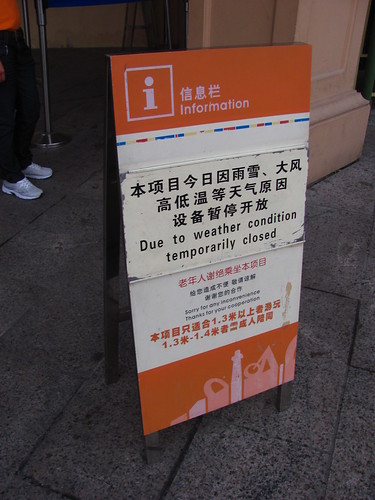 The skies were the same dingy grey as they had been all day, but none of the rides were open. Did they make the call to suspend operations for the rest of the day based on five minutes of rain? It wouldn’t have entirely surprised me.
The skies were the same dingy grey as they had been all day, but none of the rides were open. Did they make the call to suspend operations for the rest of the day based on five minutes of rain? It wouldn’t have entirely surprised me.
Despite getting on all the coasters at least once or twice, the day was feeling more and more like an exercise in futility as time slowly slipped closer to the closing hour. Was it possible my time here had come to an end before I even realized it had? Was the rest of this very expensive and exhausting trip just going to lead to the same disappointing results over and over?
Fortunately, before my thoughts could get too pessimistic, Happy Valley had one last surprise for me: Fireball reopened, and the closure effectively cleared out the crowds that had been waiting. Not only was I one of the first back on the ride, but I even got the choice of the front row seat. Finally my luck turned around!

 Fireball to me feels like the Gravity Group’s updated take on a GhostRider style of wooden coaster, and I think it will work well to do a comparative analysis with that more familiar coaster to my western-based readers. Both rides channel the art and traditions of classic wooden coasters in terms of configuration and visual presentation, but updated with the particular nuances of their designer’s contemporary “house style.” (Perhaps a fitting approach for China’s first-ever wooden coaster.) In GhostRider’s case that meant lots of swooping fan curves and hard laterals with a few sharp jolts of airtime, while Fireball leans more into heavily-banked inclined turns with small uphills capping the peaks and more of a smooth, flowing layout overall.
Fireball to me feels like the Gravity Group’s updated take on a GhostRider style of wooden coaster, and I think it will work well to do a comparative analysis with that more familiar coaster to my western-based readers. Both rides channel the art and traditions of classic wooden coasters in terms of configuration and visual presentation, but updated with the particular nuances of their designer’s contemporary “house style.” (Perhaps a fitting approach for China’s first-ever wooden coaster.) In GhostRider’s case that meant lots of swooping fan curves and hard laterals with a few sharp jolts of airtime, while Fireball leans more into heavily-banked inclined turns with small uphills capping the peaks and more of a smooth, flowing layout overall.
While Fireball lacks the midcourse section that GhostRider has, both rides also have a very distinctive two-act structure, plus a short concluding sequence. Both start off fairly similarly, with a long straight drop just over 100 feet deep, a big camelback airtime hill, and a sweeping turnaround. Repeat this general idea but a bit closer to the ground with more sustained speed to complete the first “out and back” loop.
On the second lap around the main circuit, both rides kick it off with a somewhat large midcourse drop (GhostRider’s is a bit better in this regard) before signaling the beginning of a more frenetic experience diving through the dense superstructure. Fireball chooses to float like a butterfly while GhostRider stings like a bee; each have their merits. This is my favorite part of both coasters; on Fireball there’s a serpentine sequence of s-curving hills that has a very fluid, appealing “dance” quality to it. This is followed by an equally fun series of quick “skipping” bunny hops that shred through the superstructure, again with a very fine sense of rhythm through the entire sequence.
It’s the short concluding sequence in each layout that distinguishes the two coasters the most from each other, both in approach and in quality. Whereas GhostRider finishes with an extended double helix that provides a strong counterpoint to the rest of the ride and makes a very satisfactory final statement, Fireball takes a jaunt over the midway for a few more bunny hop airtime hills. The elevation needed to clear the pathway below results in an oversized element that kills the ride’s pacing up to that point. The couple of simple, straight bunny hills and a banked curve that follows feel decidedly bland and lacking in nuance compared to the layout that preceded it, and has little imagination for what to do little with the remaining kinetic energy at the end of this 3,818′ long layout. On top of that, one of the bunny hills developed some nasty potholes as of 2011, although hopefully with regular maintenance that issue wasn’t a permanent one.
Ultimately, the gentler approach and lackluster finale means that Fireball doesn’t quite measure up to GhostRider, but it’s still an excellent ride. It looks fantastic from nearly any angle, and based on videos of the ten other Gravity Group coasters to open in China throughout the following decade, I suspect that the original Fireball may still be the best of the collection. (But include GCI in the rankings and that’s a different story.)
I was able to get four more laps on Fireball over the final hour the ride was open; a much better way to end the day than it was to begin it. Although the rides closed at 5:00pm, the park remained open for some time after. I took the opportunity to wander around empty midways and take photos in the smoggy early evening light.








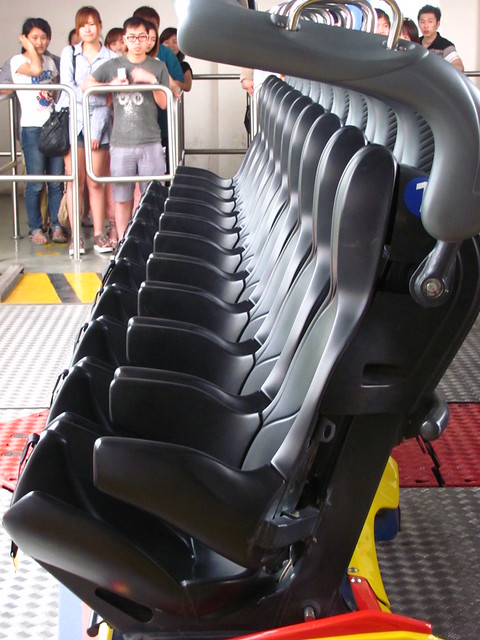













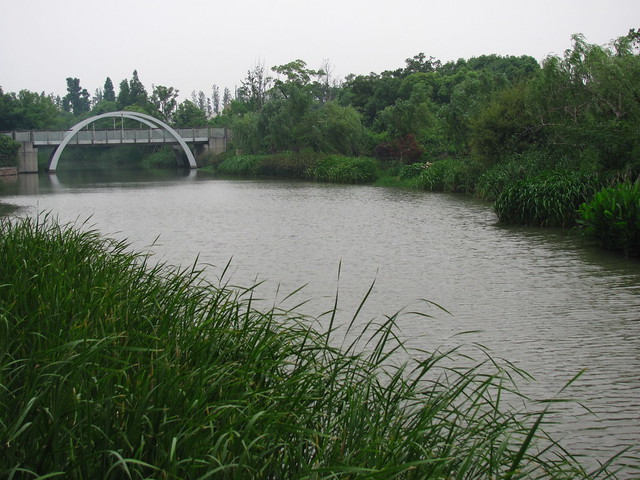
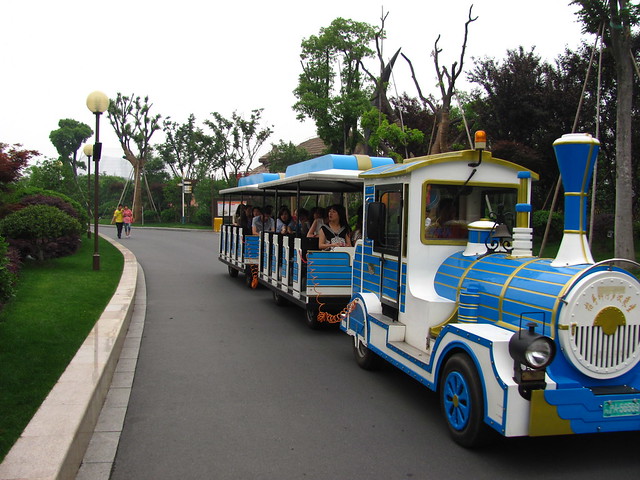







































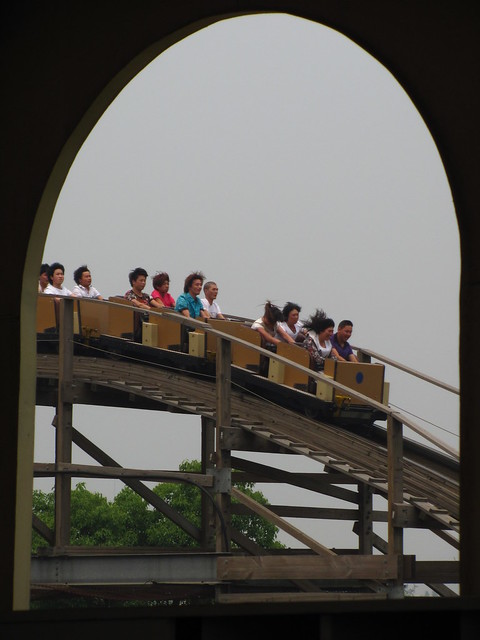


















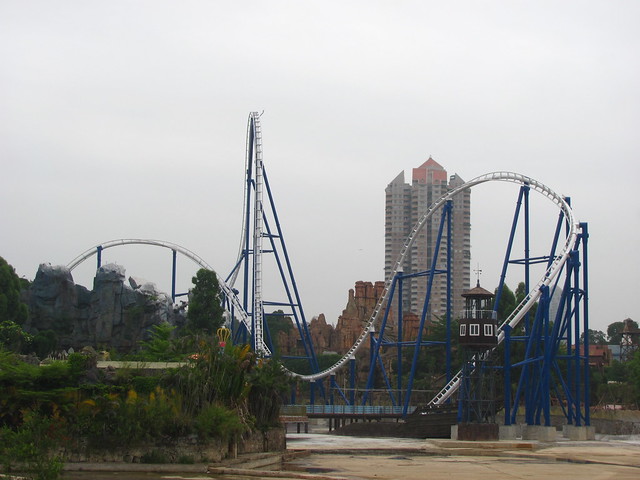













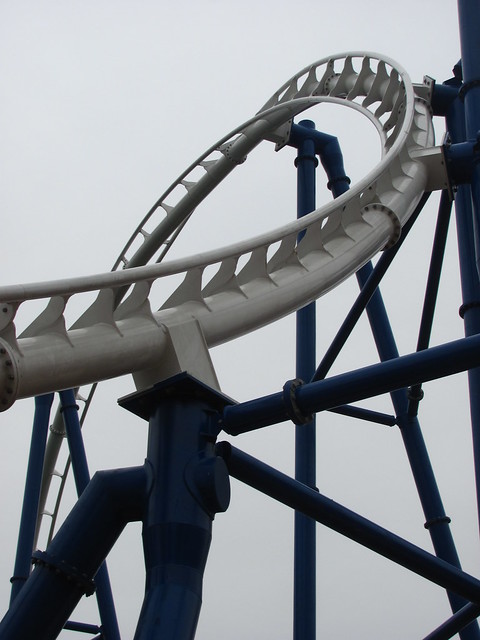





























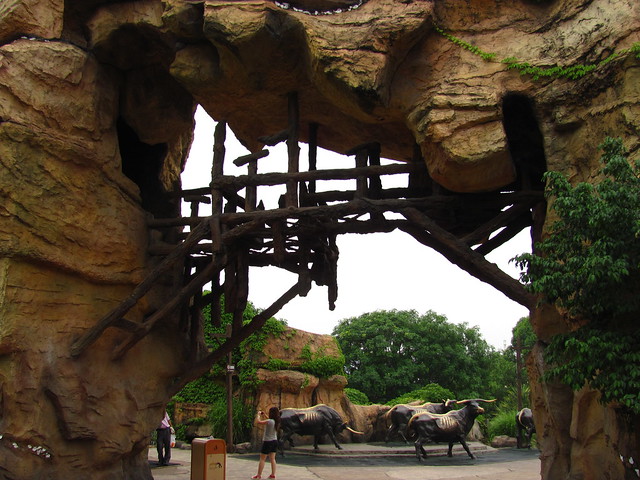













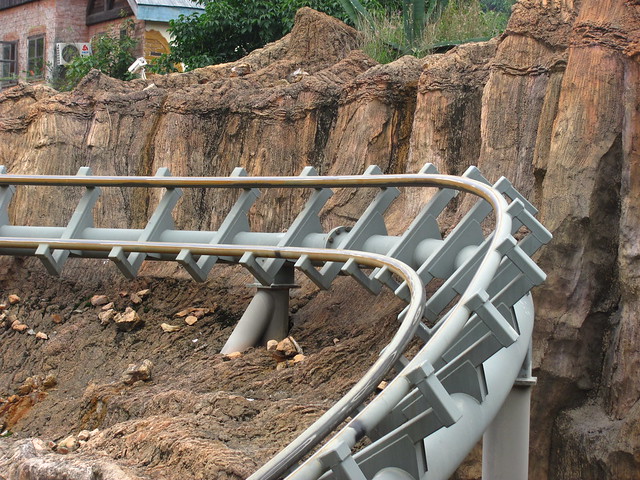




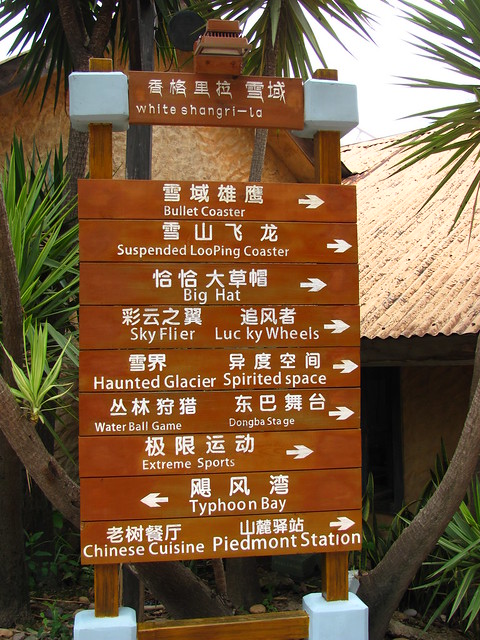



























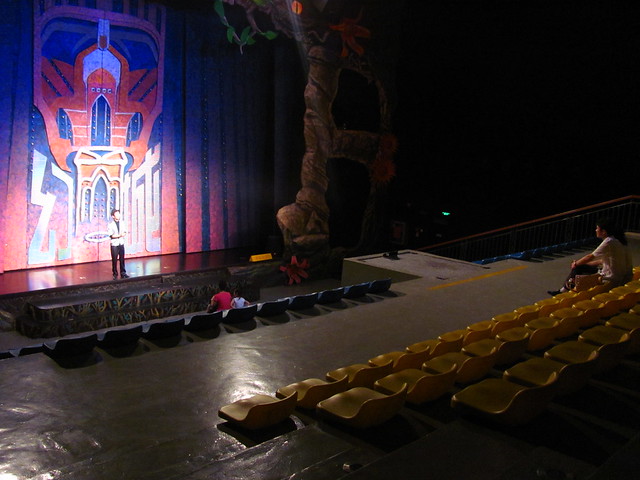











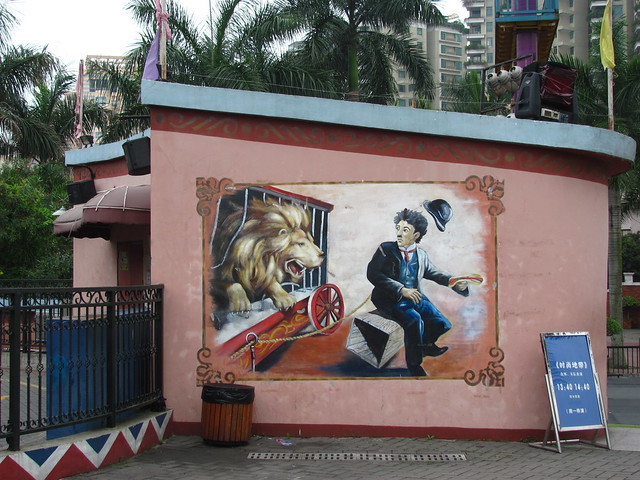


















Comments